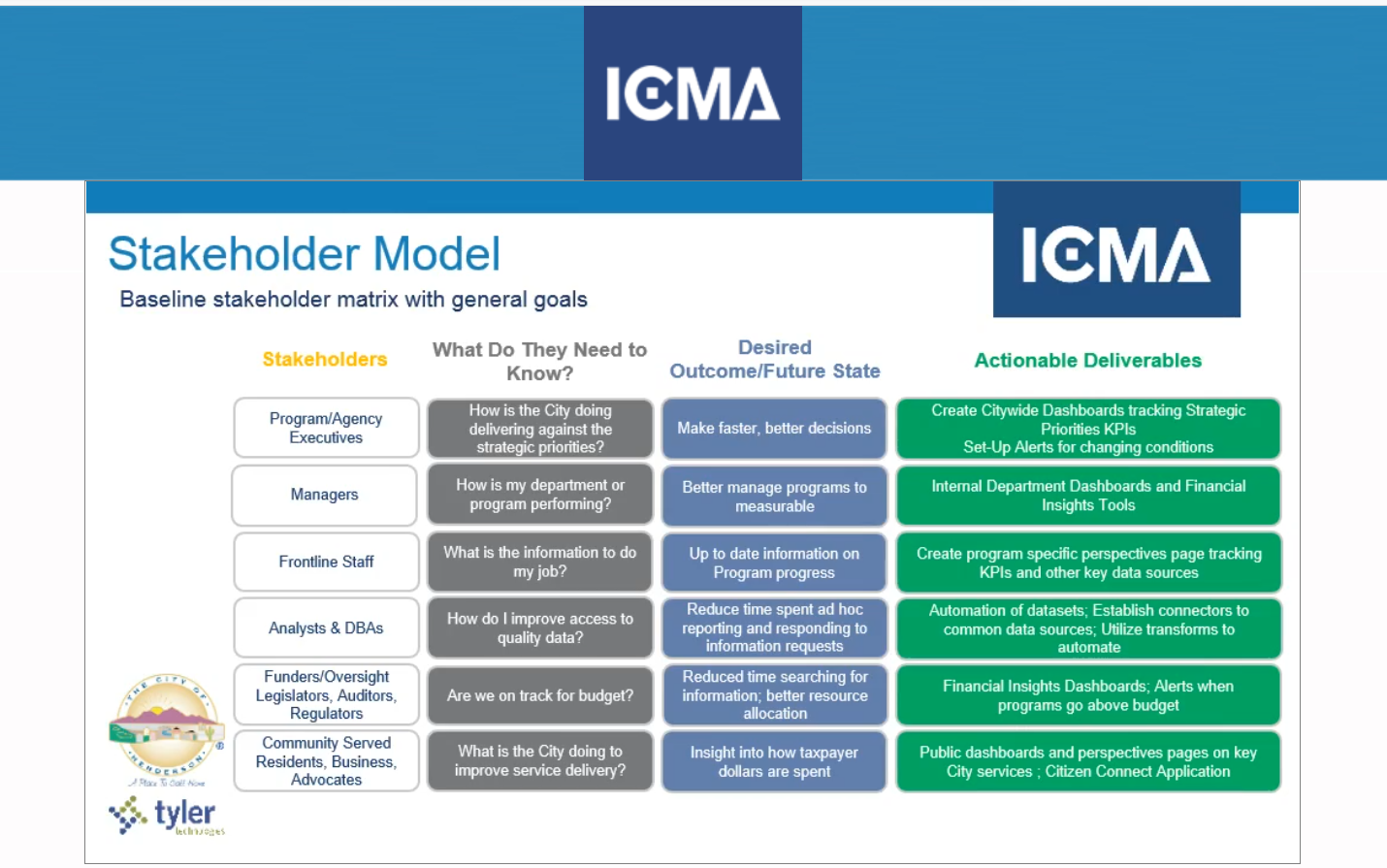How to Increase Efficiency Through Data
August 29, 2019 by Meredith Trimble
Real-Life Lessons From Two City Leaders

Local governments understand the need to keep pace with the digital world. But for many, effectively implementing the organizational changes necessary to become a data-enabled operation remains a challenge.
Government leaders are best poised to mobilize and empower staff to affect change, but how? Laura Shearin, Business Administration Manager, and Bristol Ellington, Chief Operating Officer and Deputy City Manager, from the City of Henderson, Nevada, joined Tyler’s Oliver Wise on Aug. 22 to share their insight. Together, they explored leadership methods that pull rather than push; enable rather than require. They illustrated, through real-life examples, how to
- Establish a long-term vision
- Create buy-in through early successes
- Empower staff
- Increase organizational efficiency
In addition, identifying and addressing employees’ technological skill gaps effectively drove change. In taking these steps, Henderson enhanced service delivery and improved community outcomes. Below are some key takeaways from the webinar, Increasing Efficiencies in Local Government: Connecting Data, People, and Processes, hosted by ICMA in partnership with Tyler:
 |
 |
 |
Laura Shearin
Business Administration Manager
Henderson, Nevada |
Bristol Ellington
Chief Operating Officer/Deputy City Manager
Henderson, Nevada |
Oliver Wise
Director, Socrata Data Academy
Tyler Technologies |
Data Matters
“The promise of data in government is profound,” noted Oliver Wise. “Data is about fundamentally transforming our government.” Here’s how:
- Data can make us smarter. Sure, data can help us make better decisions, but using data well allows us to create a feedback loop to understand what’s working and what’s not working in government. This allows agencies to adjust accordingly, and continuously improve in potentially limitless ways.
- Data connects silos. It’s frustrating when the right hand of government doesn’t talk to the left hand. Data can be a catalyst for a cross-agency nervous system that provides government with a wholistic view of the residents, businesses, and places it serves in order to coordinate services in real time and become more responsive.
- Data can empower employees with new insights. Knowledge is power, and data represents knowledge. When governments can distribute and share that data across agencies and up and down organizational charts, employees are empowered with the information and tools they need to glean new insights and act on them.
Break Silos and Hierarchy
In operationalizing Henderson’s vision to become “America’s Premier Community,” Ellington and Shearin explained the city’s thoughtful progression from vision through action plans. In forming a strategic plan that would stay fresh and alive, staff collaborated across departments to develop initiatives. These teams also worked together to create the related action plans.
This produced a strategic plan around subject-based priorities. Not only were traditional departmental silos broken down, this also upended the traditional hierarchy. For subject-based projects, managers from multiple departments could have action items and report to a non-managerial staff subject expert. This increased buy-in for the plan at all levels.
Put the Right Data in the Right Place
“Organizational buy-in comes from the process itself,” noted Ellington. For him, the process of change is one of continuous improvement from strategy through operations.
According to Shearin, the first order of business in the process “is to stand up a system where everyone can access data so they can use it.” “If you have data squirreled away somewhere, it’s just not useful,” she said. This means moving away from analysts collecting and analyzing data, but not sharing it in useful ways with people doing the work. In other words, enabling data sharing is the critical first step in the culture shift towards a data-informed organization.

It’s just as important to get the right data to the right people. Henderson uses “tiered data” to ensure that people see the data that informs their specific decisions. “Cities are data rich, but it doesn’t do any good to overload the system with data people can’t use,” said Ellington. Executives have strategic measures that differ from those of division managers, so their data needs are different. That said, “it’s all there,” noted Shearin. “If a supervisor needs to know how many potholes we filled last month, he can go right in and see that.”
Finally, data well used creates and celebrates successes. “Data should be used as a flashlight, not a hammer,” Ellington said. It’s not a punishment, it’s a way to celebrate the things that are going right.